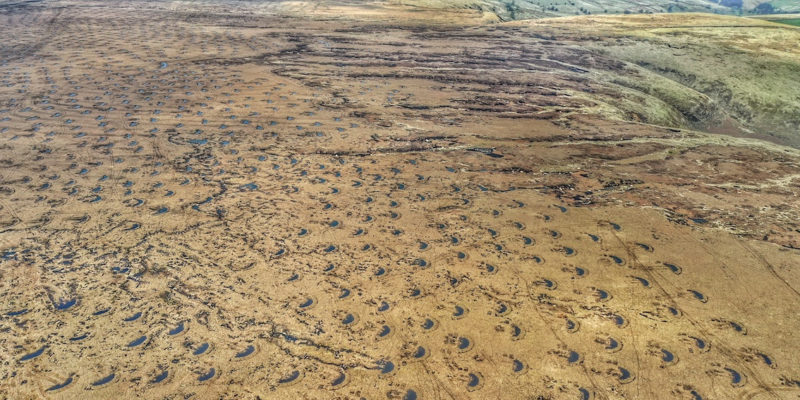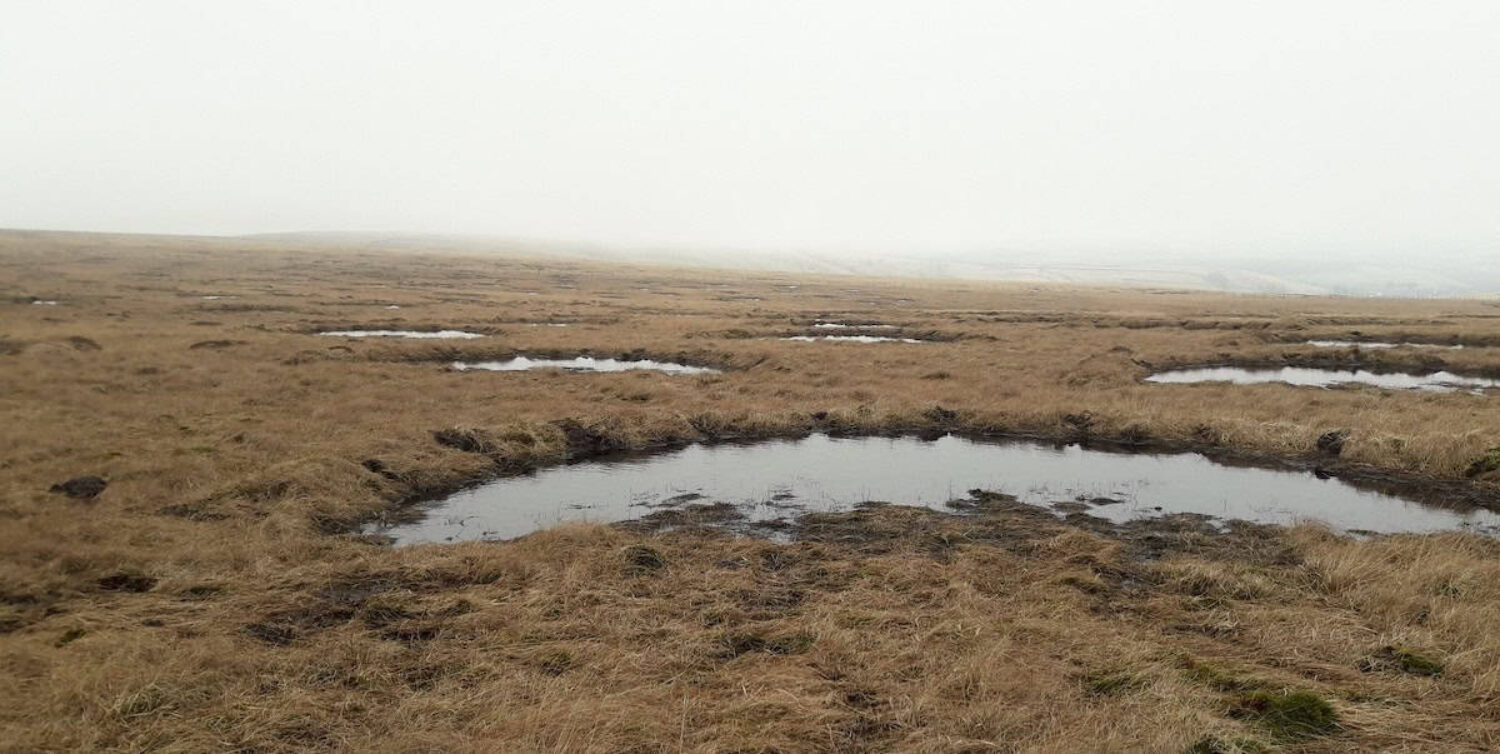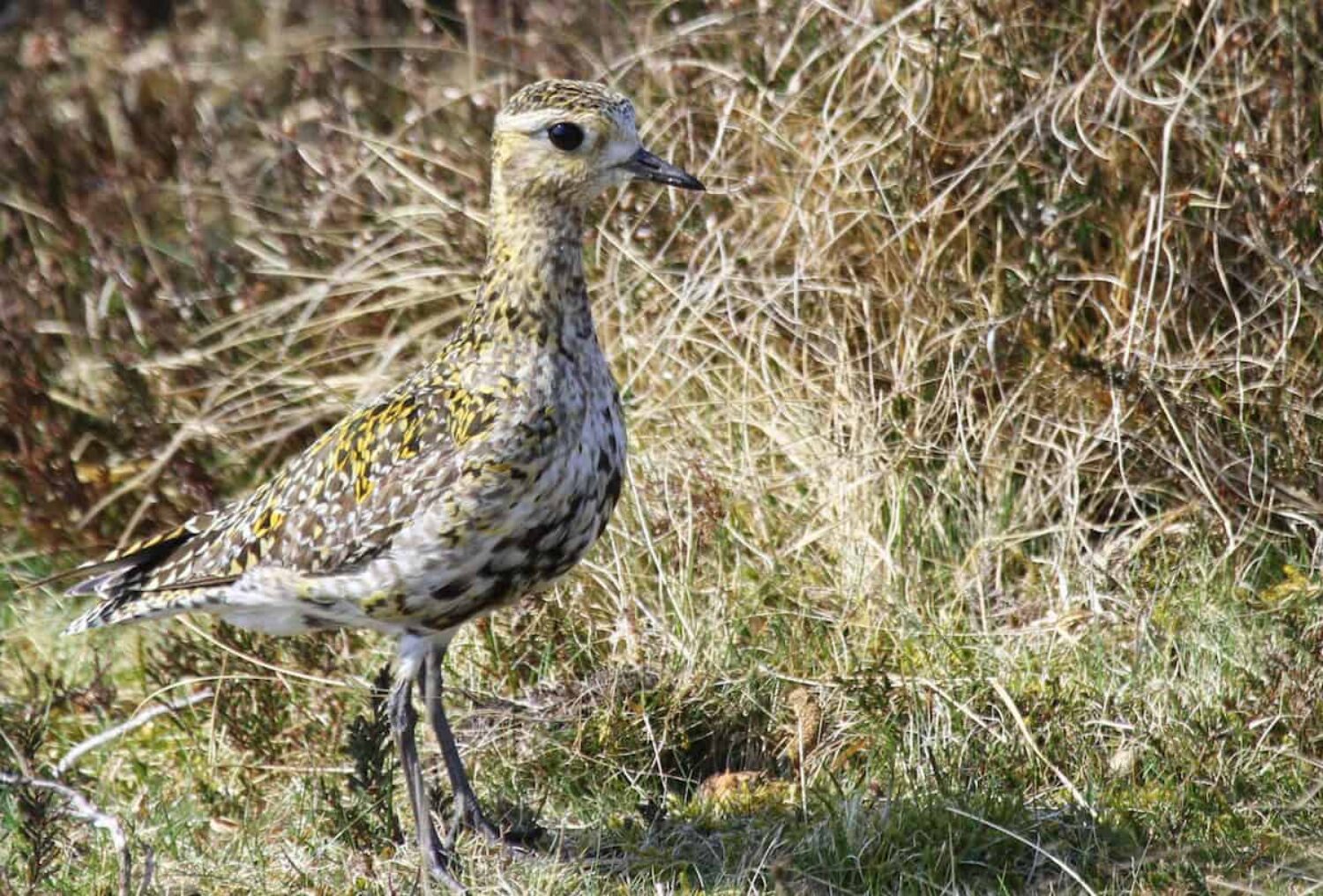
[ad_1]
A peatland restoration project near Manchester will help sequester carbon, boost biodiversity and prevent flooding. Its launch comes amid dire warnings about the climate crisis.
Viewed from above, the cratered landscape looks like the surface of the moon. But the otherworldly scene is in fact a wasteland near Manchester, where a large-scale peatland restoration project has been launched to help address the climate crisis, biodiversity loss and flooding.
Over the past six months, conservationists have sculpted 3,500 scallop-shaped levees, or dams, in the Holcombe Moor peat bog in the West Pennines. The banks were created to catch the water and re-wet the peat, which has dried up as a result of pollution, overgrazing and wildfires.
Peatlands store twice as much carbon as the world’s forests, but they release those emissions when they degrade. Restoring them, therefore, is vital in the race to stabilize our climate.
In addition to absorbing CO2, healthy peatlands also absorb flood water.
“If you imagine a giant sponge that’s covered in thousands of tiny holes and can hold large amounts of water, that’s what we’re looking for here,” said Maddi Naish, a rural surveyor for the National Trust, who led the project.
“Peat embankments stop rainwater rushing through and out of the plateau and instead trap it in the moor, allowing special plants to thrive that help the peat absorb carbon from the air.” .

Maybe not much to see, but peatlands are ‘superheroes’ when it comes to absorbing carbon. Image: National Trust
The project may already be having an impact when it comes to flooding – when Storm Christoph hit the UK earlier this year, flood-prone communities at the foot of the moor were expected to flood. But the waters never came.
“It is difficult to say for sure whether our interventions stopped the floodwater reaching people’s homes earlier this year, but we hope they contributed,” Naish said. “We know that storm and flood damage will increase in the north of England by 2060, so natural flood solutions like these could become increasingly important.”
Healthy bogs are also biodiversity hotspots, attracting rare plants, insects, and waders, such as the golden plover and dunlin.

Healthy bogs attract rare waders, such as the golden plover. Image: National Trust
The UK government has committed to restoring 35,000 hectares of peatlands before the end of the current parliament. The latest report of the Intergovernmental Panel on Climate Change (IPCC) – released Monday – adds urgency to that promise, warning that humanity has a short window in which to act to keep global warming 1.5 degrees Celsius above pre-industrial levels. The temperature rises above which could cause the climate crisis to spiral out of control.
“Peatlands only cover a small percentage of the world’s land, but they are superheroes when it comes to storing carbon,” Naish said. “We are just a stone’s throw from a major city, so it is amazing to think that we live alongside a habitat that is rarer than the global rainforest, yet contributes so significantly to addressing climate change.”
The restoration of Holcombe Moor was funded by Defra and the Environment Agency. Moors for the Future Partnership, Natural England and Holcombe Moor Commoners’ Association helped the National Trust get the work done.
Lead image: National Trust
[ad_2]
Original






